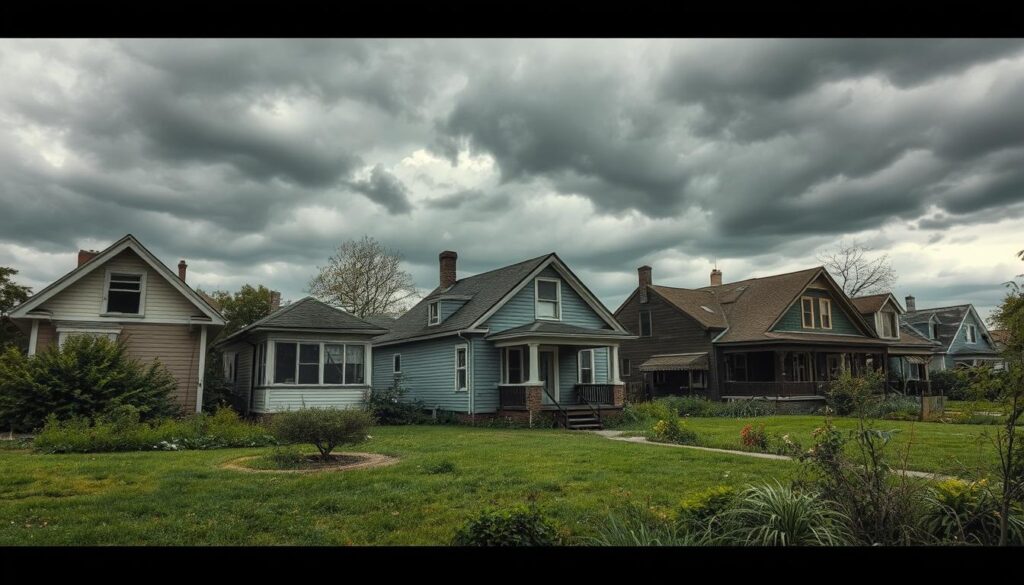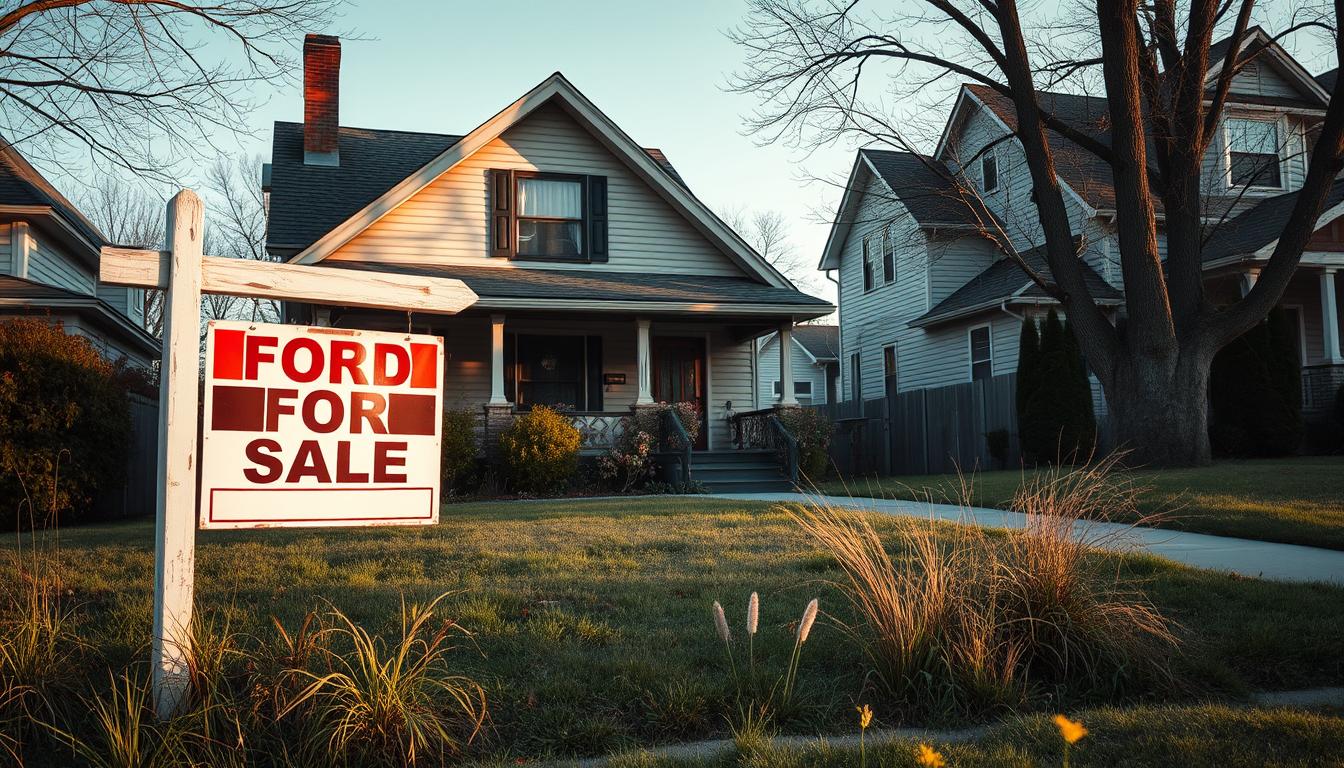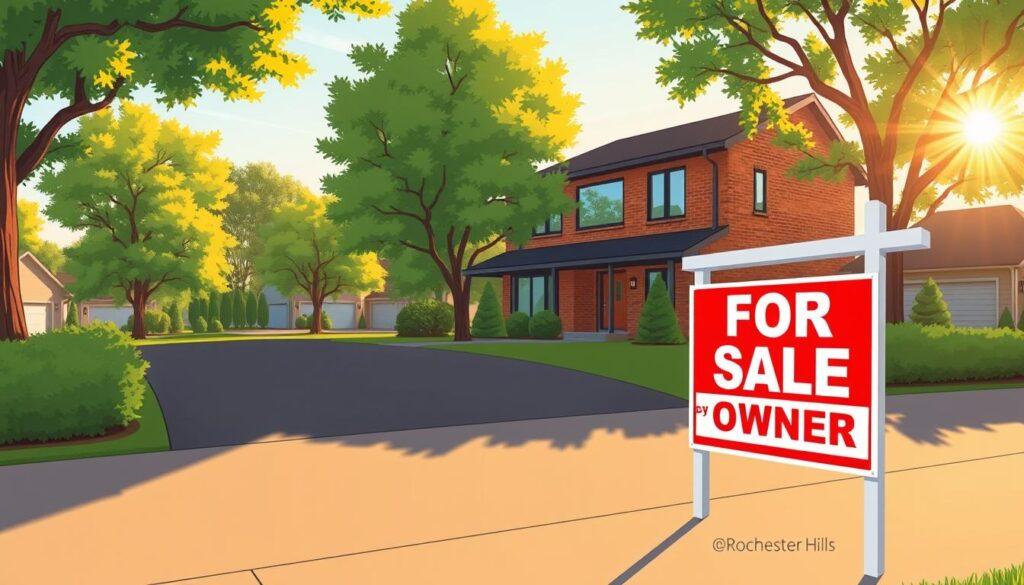Ever wondered about “pre-foreclosure”? It’s a key term in the housing market. Knowing about it is important for homeowners and buyers. Pre-foreclosure marks a critical point in a homeowner’s financial life. It shows the struggle between missed payments and the lender’s legal steps.
This article will explain the pre-foreclosure definition, its effects, and the options for those facing it. The pre-foreclosure process starts when a homeowner misses three mortgage payments. It’s crucial to understand this to navigate the housing market.
Key Takeaways
- The pre-foreclosure process typically starts after missing three consecutive mortgage payments.
- Homeowners are often considered in pre-foreclosure after being 90 days past due on their loans.
- Understanding the pre-foreclosure process is vital for both homeowners and potential buyers.
- Options available to homeowners include loan modifications, short sales, and potential deferments.
- Pre-foreclosure homes are often priced below market value, attracting various buyers.
Understanding Pre-Foreclosure
Pre-foreclosure is a critical time for homeowners facing money troubles. It’s a challenging phase but also a chance for negotiation and finding solutions. Knowing about this stage helps homeowners and buyers understand the pre foreclosure listing world better.
Definition of Pre-Foreclosure
The pre-foreclosure meaning starts when a homeowner misses mortgage payments for three months. The lender might send a notice of default. This is a crucial time for homeowners to seek pre foreclosure help and talk to lenders about their debts.
How Pre-Foreclosure Differs from Foreclosure
Pre-foreclosure is a proactive step before foreclosure, which is when a lender takes a property due to unpaid debts. In pre-foreclosure, homeowners can sell their property for a good price and keep their credit score intact. Properties in pre-foreclosure are often in better shape than those in foreclosure, attracting buyers.
Here’s a comparison of pre-foreclosure and foreclosure:
| Aspect | Pre-Foreclosure | Foreclosure |
|---|---|---|
| Ownership Status | Homeowner retains ownership | Lender owns the property |
| Condition of Property | Generally occupied, may be in good shape | Often vacant and possibly neglected |
| Timeframe | Can be resolved quickly | Involves a lengthy legal process |
| Market Listings | Not typically listed on MLS | Listed on MLS with lower prices |
| Purchasing Strategy | Negotiation with owners | Bidding at auction or direct sale |
What Does Pre Foreclosure Mean
The pre foreclosure process is key for those facing financial hurdles on their way to owning a home. It starts when a lender sends a notice of default because of missed payments. This is a big warning for homeowners.
Knowing about this legal step helps homeowners make better choices.
The Legal Process Involved
The legal steps begin with a notice from the lender about default. This happens after three missed payments. It means the lender might start foreclosure if the problem isn’t fixed.
This phase can last from three to ten months. The lender tries to get court approval and looks at different options. Homeowners should talk to their lenders to find help and avoid losing their property.
Impact on Homeowners
Pre foreclosure affects homeowners deeply, both emotionally and financially. They feel stressed and worried about losing their home. They must carefully consider their options.
Common choices include loan modifications or short sales. These can help financially. For more information, check out California’s foreclosure process and find the right path.
The Pre-Foreclosure Process Explained
Understanding the pre-foreclosure process can help homeowners facing financial issues. It also helps potential buyers looking at pre foreclosure properties. Knowing the stages helps clarify what happens and how it unfolds.
Stages of the Pre-Foreclosure Process
The pre-foreclosure process has several key stages. When a borrower misses mortgage payments, they usually have 30 days to catch up. If they don’t, and are 90 days late, a notice of default (NOD) is sent out.
This notice officially tells the homeowner they’re in default. State laws determine how long it takes from the NOD to the auction. At the auction, the lender sets a minimum bid based on the loan amount and any liens.
If the home doesn’t sell, it becomes real estate owned (REO). The lender then sells it through a broker.
Notice of Default: What to Expect
Getting a notice of default is a critical moment. It means urgent action is needed. This document warns of further steps that could lead to eviction.
After the auction, if a new owner is chosen, eviction can start right away. They might need to leave the property quickly.
Knowing these stages helps homeowners and buyers understand the process better. For more on the foreclosure timeline and its effects, check out this link.

Options for Homeowners in Pre-Foreclosure
Facing pre-foreclosure can be overwhelming. It’s important to know your options. Homeowners have several ways to find relief and keep their homes.
Loan Modification and Repayment Plans
Loan modification is a key option for homeowners in pre-foreclosure. It can make payments easier by changing the mortgage terms. This might include extending the loan or adding missed payments to the principal.
Repayment plans also offer help. They let homeowners pay off overdue amounts slowly. This can prevent foreclosure and help them keep their property.
Short Sales and Deeds in Lieu of Foreclosure
Short sales are another choice. Homeowners sell their property for less than the mortgage owed. This can reduce financial loss for both the homeowner and lender.
Short sales give homeowners more time in their homes. A deed in lieu of foreclosure is simpler. Homeowners give the property to the lender to avoid foreclosure. This can hurt credit less than a full foreclosure.

| Option | Description | Impact on Credit |
|---|---|---|
| Loan Modification | Restructures mortgage terms for affordability | Potentially neutral; varies by situation |
| Repayment Plan | Allows gradual repayment of overdue amounts | Potentially neutral; depends on execution |
| Short Sale | Sells property for less than owed on mortgage | Less damaging than foreclosure; reported for 7 years |
| Deed in Lieu of Foreclosure | Homeowner hands over property to lender | Less damaging than foreclosure; reported for 4 years |
Exploring these options can offer significant relief. It’s crucial to act quickly and seek professional help. This way, you can navigate the pre-foreclosure process effectively.
Benefits and Drawbacks of Pre-Foreclosure Properties
Investing in pre-foreclosure properties can be a great opportunity for both seasoned investors and first-time buyers. The pre foreclosure meaning refers to homes in the early stages of foreclosure. These properties offer unique benefits and challenges. It’s important to understand both sides before investing.
Advantages for Buyers
One big plus of pre-foreclosure properties is the chance to buy them at a lower price. This is because homeowners need to sell quickly to avoid debt. Buyers can negotiate with sellers, leading to good deals for everyone. The main benefits are:
- Lower prices than the regular market
- Less competition from other buyers
- A quicker buying process since sellers want to sell fast
- More financing options, as some lenders offer loans for these properties
Investors can use real estate data platforms to find these opportunities. This way, they can act fast and get good deals.
Challenges for Homeowners
Homeowners face unique challenges when dealing with pre-foreclosure. After getting a Notice of Default or lis pendens, they have about three months to fix the issue. The main challenges are:
- Poor property condition due to neglect
- Potentially higher costs for repairs
- Risks in property transactions
- Hidden costs during the sale process
Winning the trust of distressed homeowners is hard for buyers. It’s crucial to do thorough research and inspections. This helps avoid unexpected costs and makes the buying process smoother.
Conclusion
Understanding what pre foreclosure means is key for homeowners and buyers. It’s a first step that offers chances for both sides. Homeowners facing money troubles can work out deals to avoid foreclosure.
This can lead to better outcomes like loan changes or payment plans. For buyers, pre foreclosure properties are great investments. They can get good deals before the property goes to auction.
Los Angeles County, for example, has seen a lot of foreclosures. This gives investors a chance to find good deals on distressed properties. It’s all about knowing the pre foreclosure process well.
Homeowners should look for ways to avoid foreclosure. Buyers should also be smart when looking at pre foreclosure properties. The goal is to understand the situation and act wisely.






